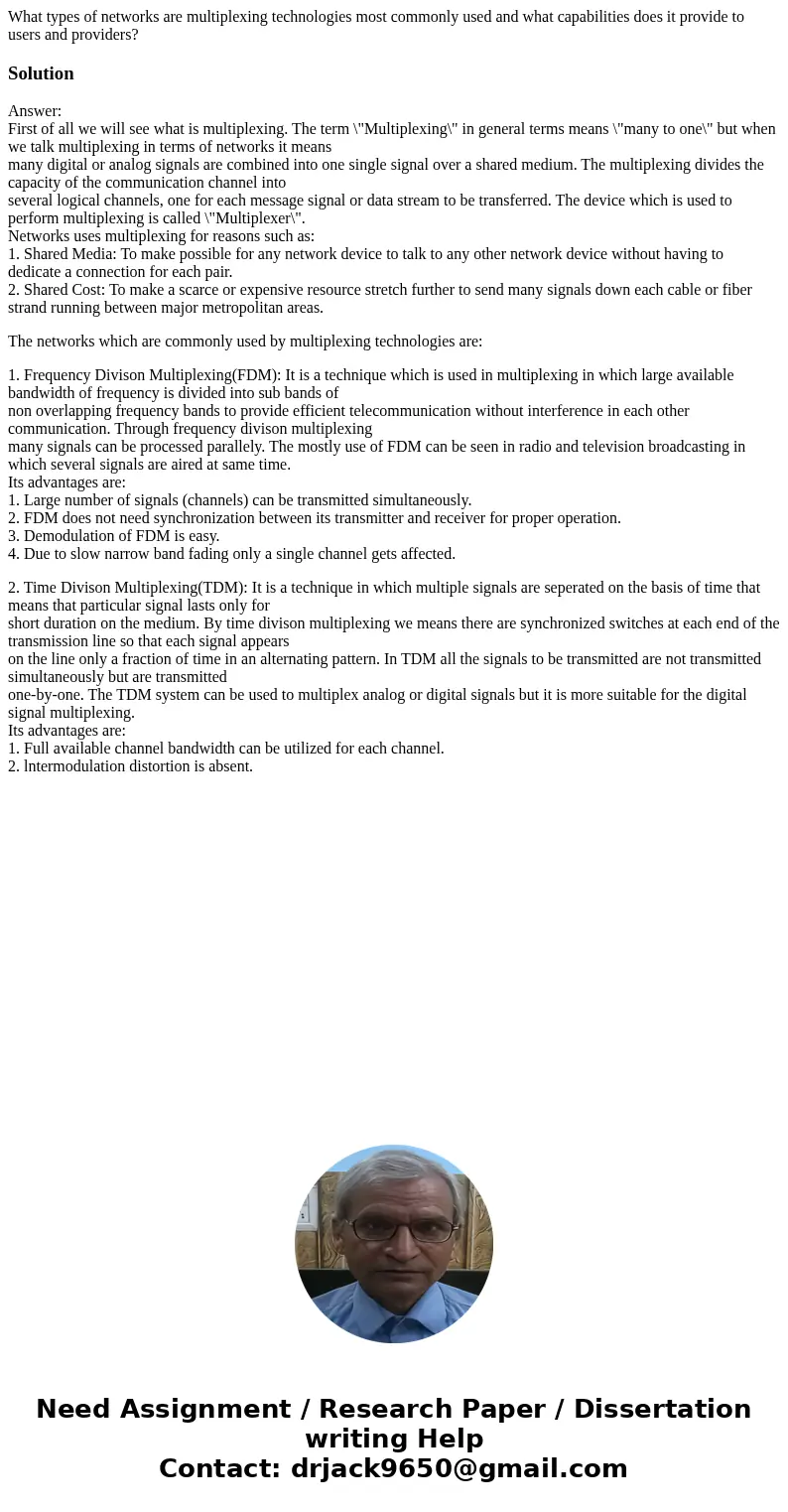What types of networks are multiplexing technologies most co
What types of networks are multiplexing technologies most commonly used and what capabilities does it provide to users and providers?
Solution
Answer:
First of all we will see what is multiplexing. The term \"Multiplexing\" in general terms means \"many to one\" but when we talk multiplexing in terms of networks it means
many digital or analog signals are combined into one single signal over a shared medium. The multiplexing divides the capacity of the communication channel into
several logical channels, one for each message signal or data stream to be transferred. The device which is used to perform multiplexing is called \"Multiplexer\".
Networks uses multiplexing for reasons such as:
1. Shared Media: To make possible for any network device to talk to any other network device without having to dedicate a connection for each pair.
2. Shared Cost: To make a scarce or expensive resource stretch further to send many signals down each cable or fiber strand running between major metropolitan areas.
The networks which are commonly used by multiplexing technologies are:
1. Frequency Divison Multiplexing(FDM): It is a technique which is used in multiplexing in which large available bandwidth of frequency is divided into sub bands of
non overlapping frequency bands to provide efficient telecommunication without interference in each other communication. Through frequency divison multiplexing
many signals can be processed parallely. The mostly use of FDM can be seen in radio and television broadcasting in which several signals are aired at same time.
Its advantages are:
1. Large number of signals (channels) can be transmitted simultaneously.
2. FDM does not need synchronization between its transmitter and receiver for proper operation.
3. Demodulation of FDM is easy.
4. Due to slow narrow band fading only a single channel gets affected.
2. Time Divison Multiplexing(TDM): It is a technique in which multiple signals are seperated on the basis of time that means that particular signal lasts only for
short duration on the medium. By time divison multiplexing we means there are synchronized switches at each end of the transmission line so that each signal appears
on the line only a fraction of time in an alternating pattern. In TDM all the signals to be transmitted are not transmitted simultaneously but are transmitted
one-by-one. The TDM system can be used to multiplex analog or digital signals but it is more suitable for the digital signal multiplexing.
Its advantages are:
1. Full available channel bandwidth can be utilized for each channel.
2. lntermodulation distortion is absent.

 Homework Sourse
Homework Sourse